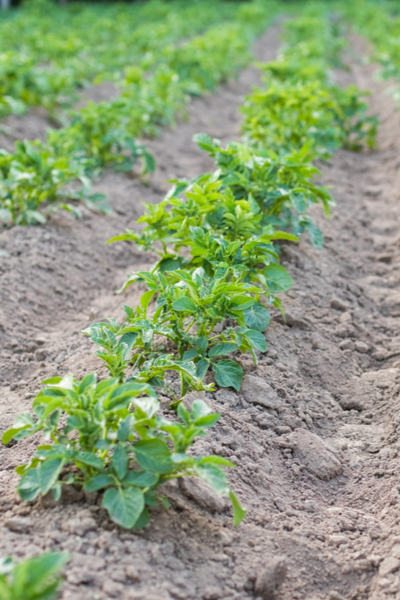Growing your own potatoes can be a truly magical experience, allowing you to witness the marvels of nature firsthand. There’s something truly satisfying about tending to your own potato plants and harvesting the delicious, nutritious tubers they produce. Whether you have a sprawling garden or a small balcony, potato planting is an accessible and rewarding endeavor that can be enjoyed by both seasoned gardeners and those with a budding green thumb.
As you embark on your potato growing journey, it’s important to understand the basics of potato planting. Selecting the right potato variety for your region, preparing the soil, and ensuring proper spacing are crucial steps in setting the stage for a successful harvest. With a little patience, care, and attention, you’ll soon be relishing the sight of lush potato plants stretching towards the sun, their foliage waving gently in the breeze.
In addition to the potato planting process itself, exploring the concept of companion planting can enhance your potato growing adventure even further. Certain plants have a symbiotic relationship with potatoes, helping to repel pests, enrich the soil, and bolster overall plant health. By carefully selecting these companion plants and strategically arranging them alongside your potato patch, you can create a harmonious and mutually beneficial environment for both your potatoes and their botanical allies.
So, get ready to roll up your sleeves, dig into the earth, and immerse yourself in the wonders of potato planting. With these steps and a sprinkle of gardening magic, you’ll soon be on your way to reaping bountiful harvests, savoring the simple joy of fresh potatoes straight from your very own garden. Buckle up and let’s dig in!
Choosing the Right Potato Varieties
When it comes to potato planting, choosing the right potato varieties is essential. The choice of potato varieties can greatly impact the success of your potato harvest. There are various factors to consider when selecting the right potato varieties for your garden.
Firstly, consider the maturity time of the potato varieties. Some varieties take less time to mature, while others require a longer growing season. Understanding the average frost dates in your area will help you select potato varieties that can be harvested before the first frost.
Secondly, consider the intended use of the potatoes. Different potato varieties are better suited for specific purposes. Some potatoes are great for boiling, while others are more suitable for baking or making crispy fries. Determine your preferred use for the potatoes and select varieties accordingly.
Lastly, consider the disease resistance of the potato varieties. Certain potato varieties are more resistant to common potato diseases such as blight and scab. By choosing disease-resistant varieties, you can minimize the risk of your potato plants getting infected and ensure a healthier crop.
By considering factors such as maturity time, intended use, and disease resistance, you can make an informed decision when choosing the right potato varieties for your potato planting endeavor.
Preparing the Soil for Planting
Potato plants thrive in well-prepared soil that is rich in nutrients. Before planting your potatoes, it’s important to take the time to properly prepare the soil. This will ensure healthy growth and a bountiful harvest.
First, start by clearing the area of any weeds or grass. Remove any rocks or debris that may obstruct the growth of your potato plants. This will create a clean and optimal environment for their development.
Next, loosen the soil by tilling or digging it. This will improve aeration and drainage, allowing the roots to grow deep and strong. Be thorough in breaking up any clumps and smoothing out the soil surface.
To enrich the soil, incorporate organic matter such as compost or well-rotted manure. This will provide essential nutrients and improve the soil structure. Spread a layer of organic matter evenly over the tilled soil and mix it in thoroughly.
Once the organic matter is mixed in, the soil is ready for planting. The loose and nutrient-rich soil will provide a perfect foundation for your potato plants to grow. By taking the time to prepare the soil properly, you are setting the stage for a successful potato planting experience.
Companion Plants for Potatoes
Kellogg Organic Soil
Planting potatoes with companion plants is a smart strategy that can help boost their growth and overall health. By choosing the right plants to grow alongside your potatoes, you can create a thriving garden ecosystem that benefits all plants involved. Here are three companion plants that work well with potatoes:
Marigolds: Marigolds are a popular choice for planting alongside potatoes. Not only are they visually appealing with their bright colors, but they also serve as a natural pest deterrent. The strong scent of marigolds repels many common potato pests, such as aphids and nematodes. Additionally, marigolds attract beneficial insects like ladybugs that feed on harmful pests. Planting marigolds around your potato patch can help protect your potatoes from potential damage.
Horseradish: Horseradish is another great companion plant for potatoes. As a member of the mustard family, horseradish releases compounds into the soil that naturally suppress pests and diseases, including ones that affect potatoes. This makes it an excellent choice for keeping your potato plants healthy. Furthermore, horseradish has a deep root system that helps to break up compacted soil, allowing the potatoes’ roots to grow more freely.
Beans: Planting beans near your potato plants can provide a natural source of nitrogen. Beans are legumes that have a special ability to capture nitrogen from the air and fix it into the soil. Potatoes require a lot of nitrogen for healthy growth, so having beans as companion plants can help fulfill their nutrient needs. Additionally, the sprawling nature of bean plants can provide shade and natural mulch, which can help conserve moisture in the soil for the potatoes.

By incorporating these companion plants into your potato planting strategy, you can create a harmonious garden environment that promotes healthy growth and keeps common pests at bay. Experiment with different combinations of companion plants to find the ones that work best for your specific conditions and enjoy the magic of growing your own potatoes.

